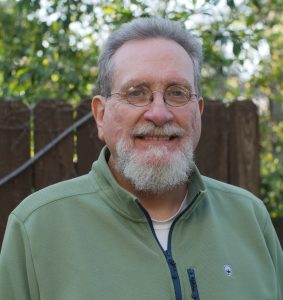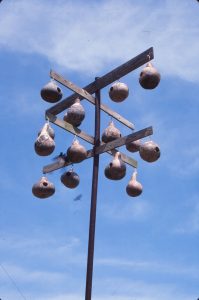My Alabama Story | By Joey Brackner
#MyAlabamaStory #AHAat50 | September 12, 2024


Born in Birmingham’s industrial suburb of Fairfield during the waning days of Jim Crow, I was a city kid but also socialized in the two nearby rural communities of my parents’ upbringing. Every Sunday we attended the church of my mother’s childhood and summers were spent with cousins. I feel most connected to my state and heritage on Decoration Days in the Spring when I travel back to these communities to clean the graves of family members. These loving occasions offer a stage for oral histories and a chance to hear about the triumphs and struggles of my forebears.
My childhood interest in history coincided with the modern civil rights movement and the Civil War centennial, an undeniable example of “what’s past is prologue.” My White, working-class, evangelical Christian home provided a relatively safe haven from the volatile politics of Alabama.
My father was a steelworker and, when I was a toddler, he often went on strike. Mother went to work as an insurance underwriter, and my parents hired African American women to babysit me. This was at a time when Birmingham was considered the most segregated city in America, and our family benefitted from racist and inequitable systems. In hindsight, it is telling that a young family that couldn’t afford a car could afford full-time domestic help. As I grew, I became aware that I was culturally different from the White America that I saw on television.
Due to the historic rise of the working and middle classes, my family acquired a car and then another; at the same time, we weren’t spared the challenges of an unpopular war, a rancorous split in our rural Baptist church, and school integration. Later, most of my high school years would be spent at an all-White private school to avoid a busing “crisis.” I could feel the anxiety and fear of change in folks all around me, and I wanted to make sense of it. I soon became of the first generation in my family to attend college. Through study of history, archaeology, and folklore, I sought to understand Alabama and what was happening around me.
I found a dialectic of historical triumphs and failures. These failures were shrouded by a dishonest official narrative strewn with alternative facts downplaying the racial power imbalances that provided the land and much of the labor that built our state. Alabama’s politicized rendering of our past allowed for divisive shenanigans that continue to this day.
By leaving the state for graduate school, I gained perspective to see the qualities of Alabama that I loved more clearly and how Alabama’s story fit into regional and national patterns. Mostly, I focused on the confluence of Europeans, Africans, and American Indians on contested ground and how rich generational knowledge survived such turmoil.

I came home to Alabama hoping to make a difference in the place I love. I dove into the state’s pottery-making traditions, and, through the narratives of Alabama’s potters, I found stories of breathtaking creativity, soul-crushing tragedy, and inhumane enslavement. Eventually becoming the state folklorist at the Alabama State Council on the Arts, I spent 36 years working with others to document, present, and fund traditional arts activities. To this day, the beauty of Alabama’s folk traditions moves me, whether represented by a well-made piece of stoneware, a gourd martin house array, a swept graveyard, or a lined-out Dr. Watt’s hymn.
Our heritage of cultural diversity makes Alabama (and the South) unique. Centuries of sharing food traditions, hunting techniques, horticulture, music, storytelling, and crafts from three continents created the distinctness and beauty that is Alabama. While we celebrate the end product, we must acknowledge that the process has been, and remains, one of inequity and injustice. Such is the case with two of Alabama’s most impactful cultural exports.
The Muscle Shoals Sound is clearly the fusion of Black and White music. The joy we hear in those iconic hits was forged in an atmosphere of racial and political strife. The epic narratives of those artists tell a story of creative conflict and cooperation in tension with cultural and regional differences. Likewise, the quilt making of the African American women of Gee’s Bend has mesmerized the art world and has brought glory to Alabama. But their aesthetic directions with an art form of European origin were born of necessity in a rural community intentionally isolated by politics.
My Alabama is at its best when we embrace and honor cultural differences as strengths that can pull us together and reduce inequitable division. We must understand that the past was not idyllic, and that change is inevitable. In my vision for Alabama, education will not be a luxury but essential for developing life skills. The arts and humanities will enrich our classrooms so that our citizenry can effectively communicate, research, and discern. STEM alone is not enough to produce such outcomes.
Balancing the beauty of Alabama with its difficult past provides hard lessons on being human. It formed me, and like many, I developed a love/hate relationship with my state. My Alabama is a place of geniuses and demagogues, pride and embarrassment, homeruns and unforced errors, forgiveness and stubbornness, jonquils and tornados, and other extremes. Yet I love this place and its people, and I refuse to be complacent. Alabama’s inheritance can be a cross to bear, but its future can be a song we sing.
Joey Brackner is the retired state folklorist for Alabama, and former host of the Alabama Public Television series “Journey Proud.” He is the author of Alabama Folk Pottery, and currently serves as vice president of the board for the Wallace Center for Arts and Reconciliation.

#MyAlabamaStory #AHAat50
February 21, 2024
I spent much of my childhood hung up on where I lived, or rather, trying to explain to others exactly where I resided. My house was situated in an undefined...